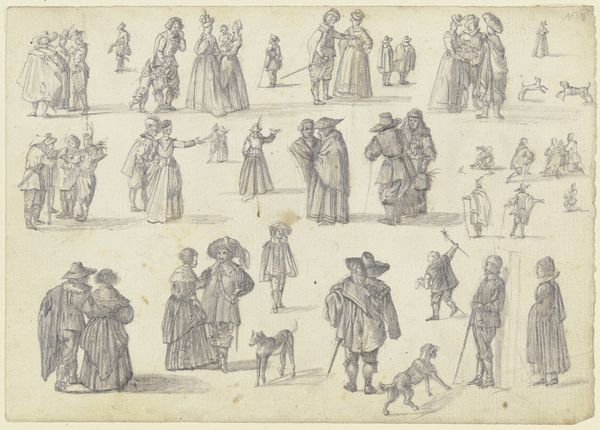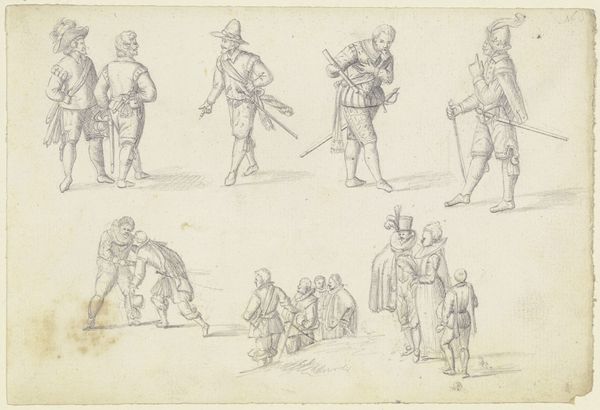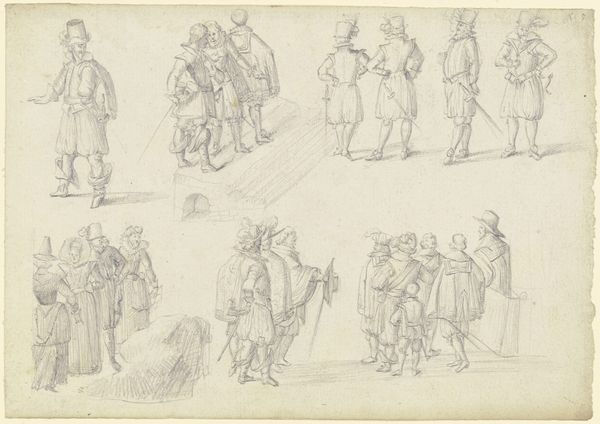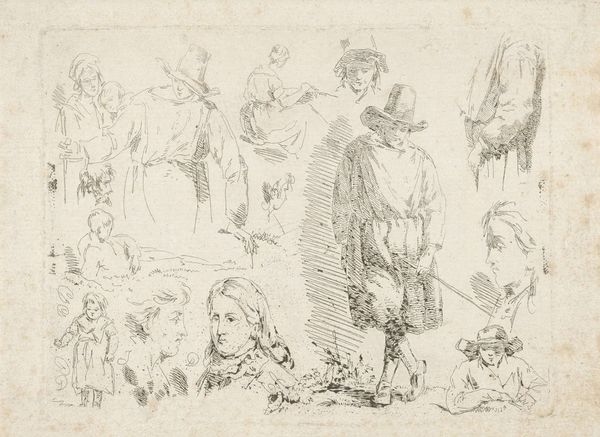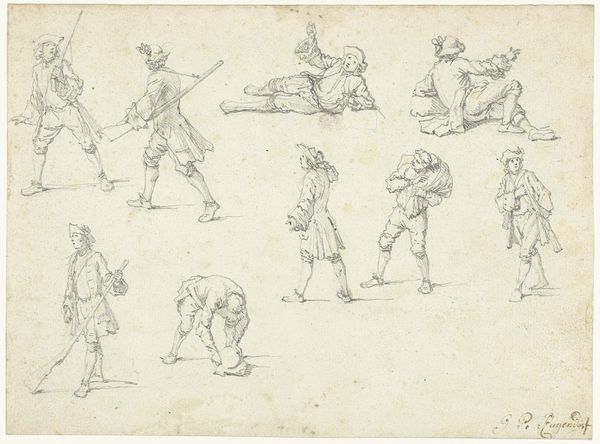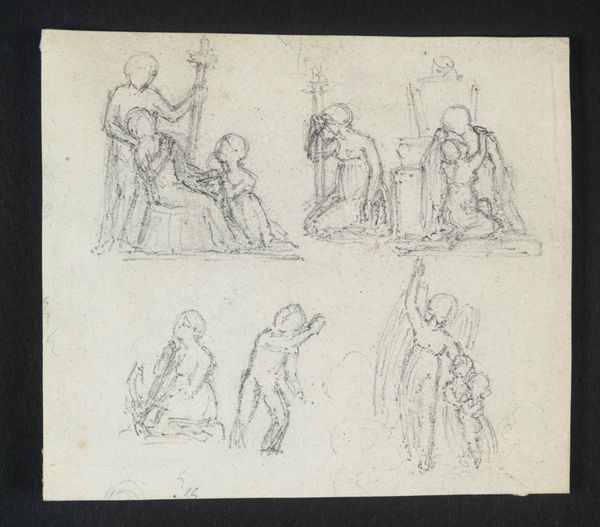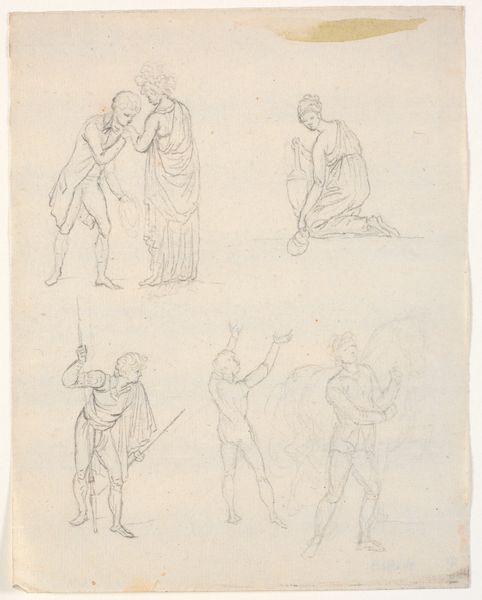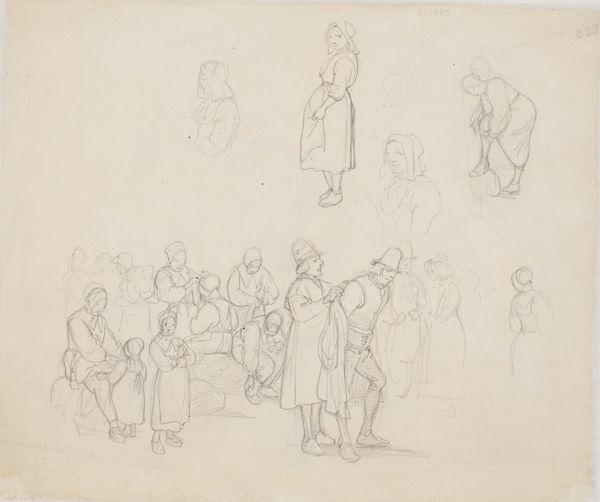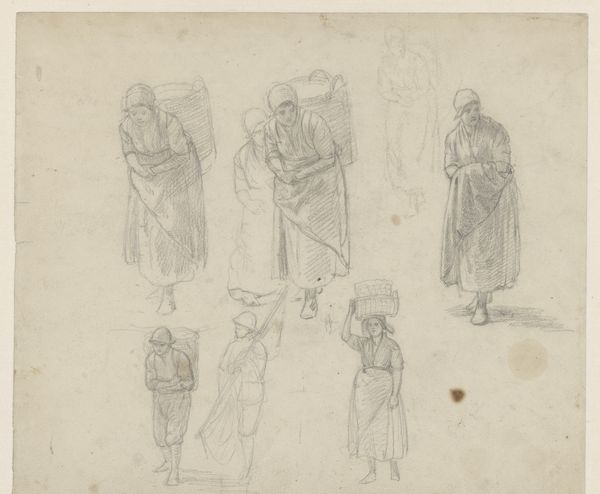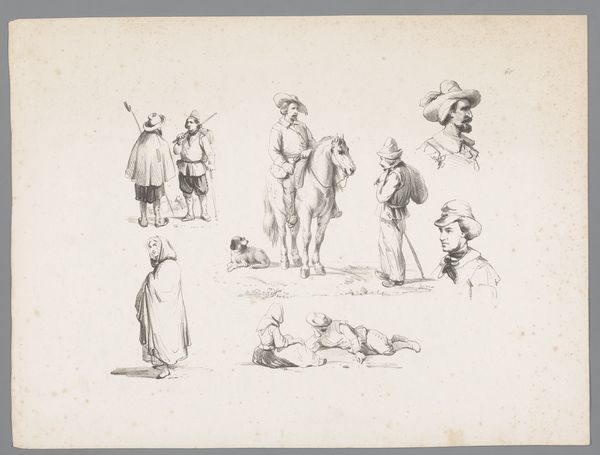
21 Figurenstudien, oben ein orientalischer König und drei Adoranten
0:00
0:00
drawing, paper, dry-media, pencil
#
portrait
#
drawing
#
figuration
#
paper
#
dry-media
#
pencil
#
15_18th-century
#
sketchbook drawing
#
genre-painting
#
history-painting
#
academic-art
Copyright: Public Domain
Editor: This is Johann Ludwig Ernst Morgenstern's "21 Figurenstudien, oben ein orientalischer König und drei Adoranten", it's undated but created with pencil and other dry media on paper and held at the Städel Museum. It reminds me of a page ripped from a sketchbook, a series of quick studies capturing various figures, with one standing out: an oriental king. What catches your eye, and how do you interpret it? Curator: What immediately stands out to me is the power dynamic inherent in the composition. We see a clear hierarchy displayed not only through the king's elevated position and ornate attire but also through the postures of the other figures. Consider the historical context: what would an "oriental king" signify to an 18th-century European audience? Editor: Exoticism and power, maybe? Something fascinating but also… distant? Curator: Precisely. And the act of "adoration," even in these quick sketches, reinforces a specific cultural perspective. Morgenstern, working within a tradition of academic art, may be subtly commenting on the relationship between Europe and the East. Does this drawing portray a neutral study, or does it participate in constructing a particular narrative about power and otherness? Editor: So it’s less about the king as an individual and more about what he *represents*? How the audience at the time would understand that symbol? Curator: Exactly. The value isn’t solely aesthetic, but deeply embedded in the social and political framework of its time. Museums play a critical role here, influencing how we *today* perceive these figures and their historical narratives. Whose stories are amplified, and whose are left in the shadows? Editor: That gives me a lot to think about. I didn't realize a simple sketch could hold so much historical weight. Curator: Art is never created in a vacuum; these pieces are cultural artifacts shaped by, and actively shaping, our understanding of history.
Comments
No comments
Be the first to comment and join the conversation on the ultimate creative platform.

